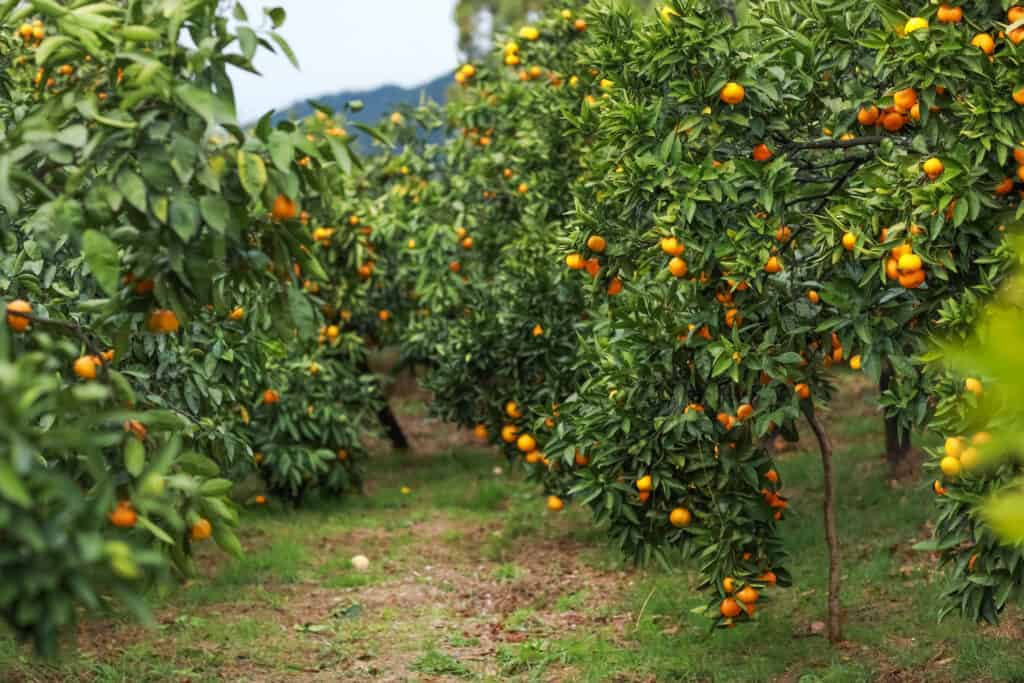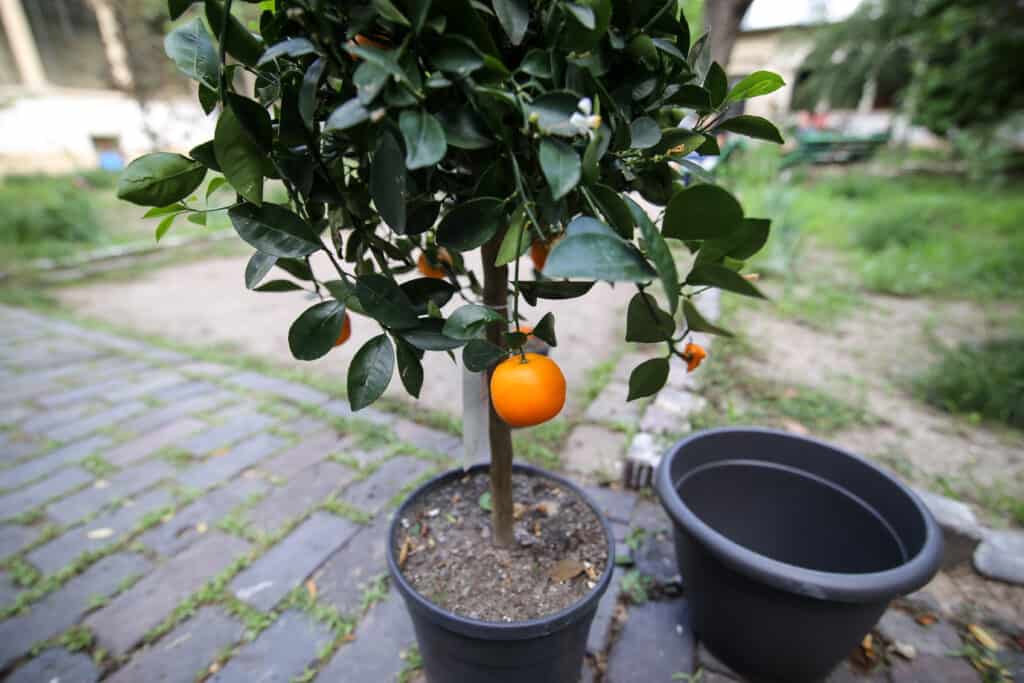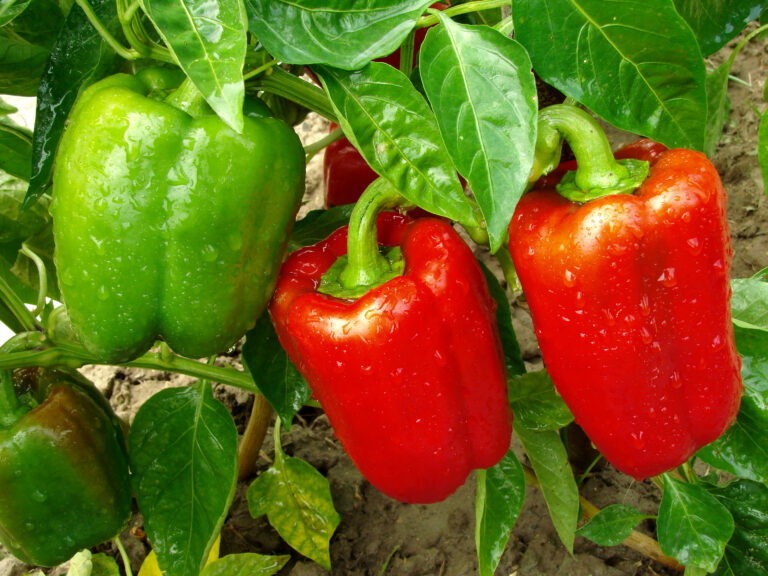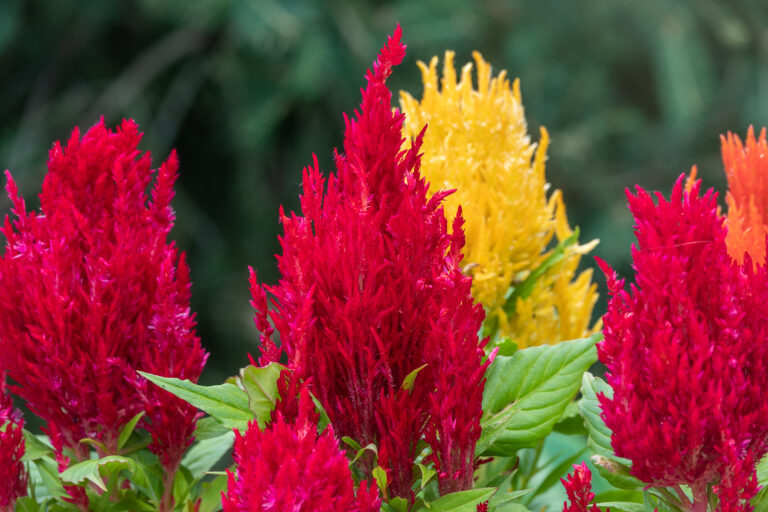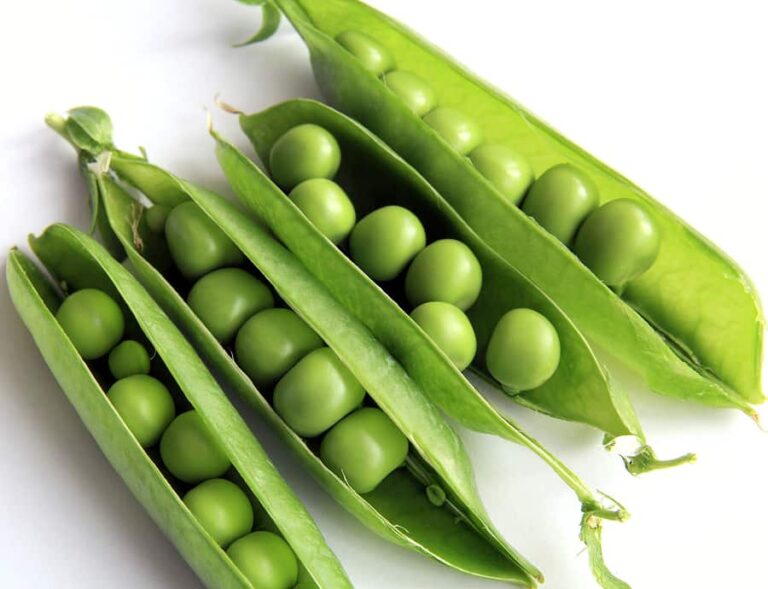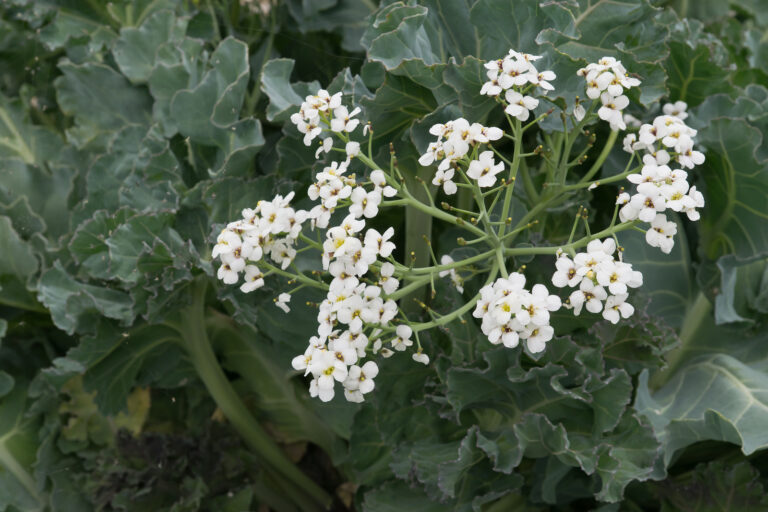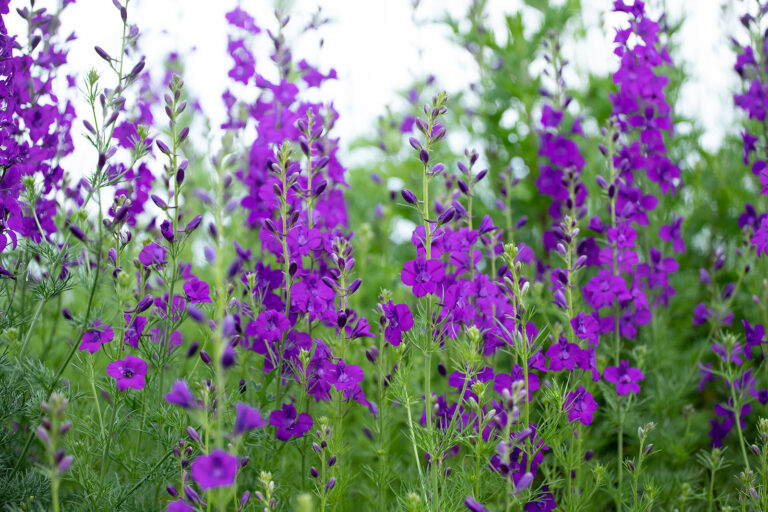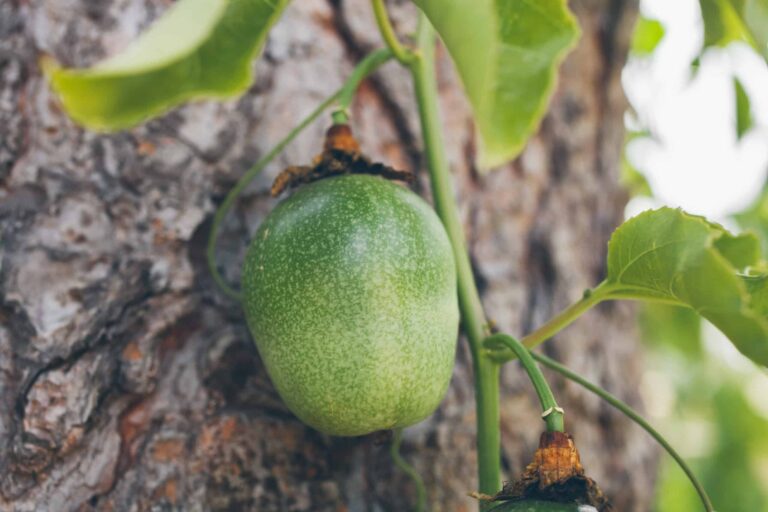How to Grow Mandarin Orange – Tangerine
The mandarin orange (Citrus reticulata) is a small citrus tree that resembles an orange. The name tangerine and mandarin are often used interchangeably for a group of small orange-like fruits that have an easy-to-peel rind.
The mandarin orange is not one citrus fruit but many. Some mandarin oranges are called mandarins, some are called tangerines, and some are called clementines.
The terms “mandarin” and “tangerine” are used interchangeably, but mandarin is more often used for lighter-colored yellow-orange cultivars and tangerine for those with a deep orange-red rind.
The satsuma is a group of cultivars derived from these and is common in Japan. The fruits are usually seedless and may also be called mandarins. The name tangerine is sometimes used for types with red-orange skins.
Related articles:
Most mandarins are half the size of an orange or smaller, but some are just as large. Most mandarins are oblate shaped tending to egg-shaped but some are round. Some mandarins have necks and others don’t. Some are orange, some are yellow-orange, and some are deep orange nearly red. Some mandarins are seedless and others are full of seeds. Some mandarins are very, very sweet and some are quite tart. Almost all mandarins are easy to peel; mandarins are sometimes called loose-skinned oranges or kid-glove oranges because they peel so readily.
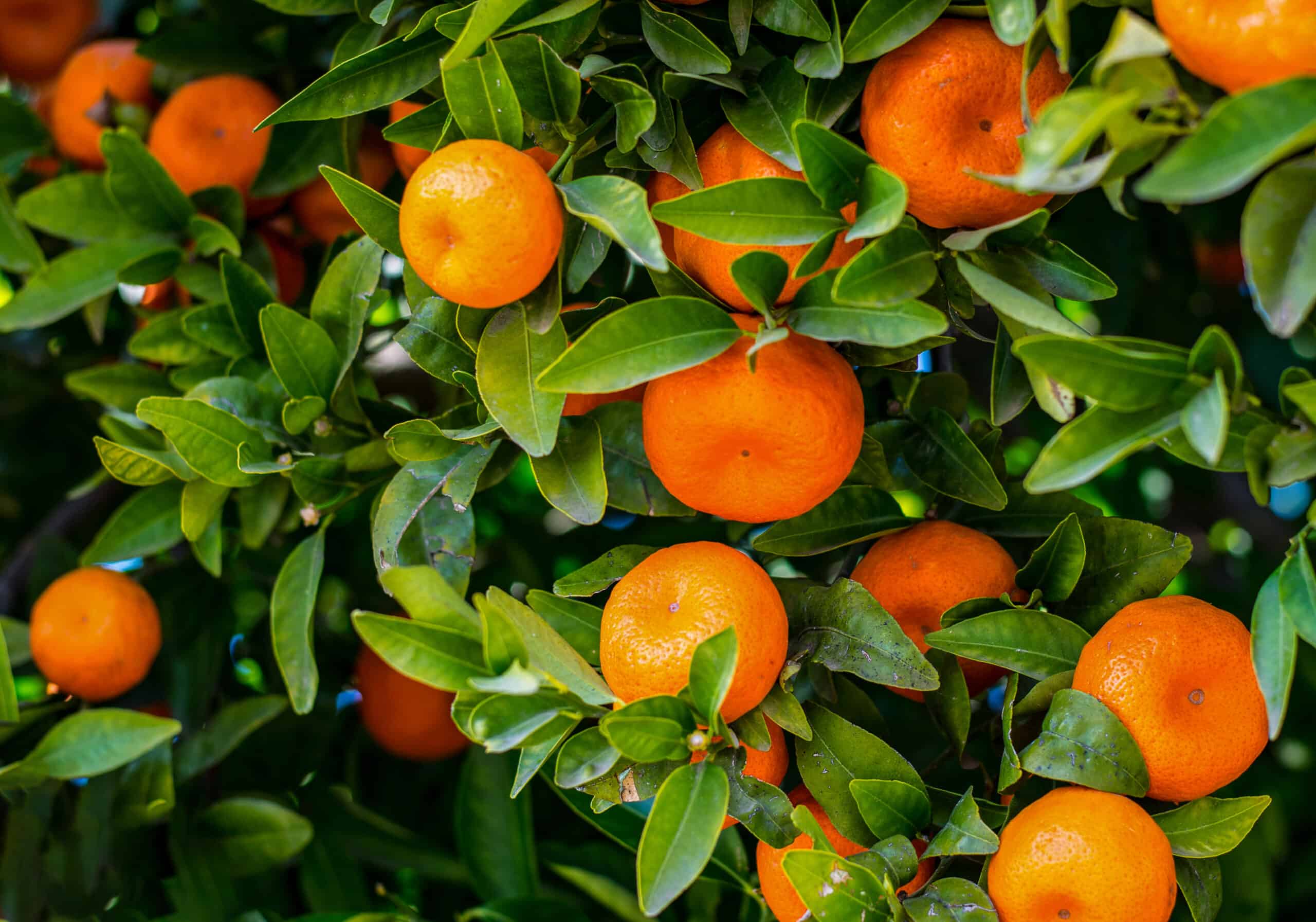
A ripe mandarin will be firm to slightly soft and heavy for its size. Mandarins are easy to peel and to split into segments.
Mandarin trees can be tall and upright or weeping and willowlike depending on the variety. Mandarins vary in size and texture. Larger varieties such as ‘Dancy’ can grow to 20 feet tall and half again as wide. Smaller varieties including Clementines and Satsumas (there are multiple cultivars of each) are smaller and more compact growing to about 8 feet tall. Mandarin trees on dwarfing and semi-dwarfing rootstocks will be half the size.
Mandarins are tender and easily damaged by temperatures that drop into mid to high 20sF. Mandarins grow best in tropical and subtropical regions. Trees will likely be damaged if temperatures drop to 24°F if not protected. Fruit will be damaged at 28°F.
Mandarins are thought to have originated in south-eastern Asia and the Philippines but they have been widely grown in Japan, southern China, and India for hundreds of years.
The seediness of mandarins is unpredictable. ‘Pixie’ and Satsumas are almost always seedless. Others such as Clementine and ‘Nova’ produce seeds if a pollinizer variety is nearby. When mandarins are grown in locations where they are isolated from pollinizers the fruit is often seedless but fruit yield may be lower. There is no precise list of compatible pollinizers and the region where a variety is grown may play a role as to whether a variety is seedy or not. Trees are mostly self-fertile. Bees can increase pollination.
Many mandarins are alternate bearing; they produce a large crop of small fruit one year followed by a small crop of larger fruit the next season; hand thinning or pruning just after fruit set can help even out production.
History of mandarin orange – tangerine
Mandarins oranges—in all their forms–are probably descended from wild oranges that grew in northeast India as long as 3,000 years ago. From India, mandarins made their way to China and from China to Europe, North Africa, and Australia before they traveled on to other parts of the world.
The first of these small, loose-skinned oranges was brought to England from China in 1805. From England, the mandarin made its way to Italy in the next decade, and from Italy, it came into wide cultivation and spread to other Mediterranean countries including several in North Africa. From China, mandarin was introduced to Australia in the 1820s.
Mandarin gained its nickname when it was introduced into England. Mandarin denoted the form of Chinese spoken by public officials and other educated people in China. The robes worn by public officials or mandarins in the Chinese empire of that time were deep orange and so this Chinese import was dubbed a mandarin.
Mandarins were introduced into the United States in the 1840s by the Italian consul in New Orleans. From New Orleans, the mandarin spread to Florida and California.
Several varieties of mandarins that are deep orange in color took the name tangerine when they were imported in great quantities into the United States in the late nineteenth century from Morocco in North Africa. Those mandarin shipments embarked from the Moroccan port city of Tangier.
Mandarin orange – tangerine growing tips
- Mandarins grow best in USDA Zones 9 and 10. Choose a location that gets at least 8 hours of sun or more each day. Plant trees in a protected spot away from a prevailing breeze or wind. Avoid planting in low spots where cold air or frost can settle.
- Plant mandarins in compost-rich, loamy soil that is well-drained. Keep the soil evenly moist. Protect plants with plant blankets if temperatures near freezing are forecast.
- Dwarf and semi-dwarf mandarins can be grown in containers. Choose a container at least 18 inches deep and wide for a young tree. Move trees to larger containers after a year or two.
- Mandarins can be grown indoors in a very brightly lit spot. Potting soil should be coarse, acidic and well-drained. Mandarins growing in containers in cold-winter regions should be moved indoors in autumn before the first frost.
- Mandarins are self-fertile. You can help a tree set fruit by taking a small brush and moving pollen from one flower to another. Bees and other pollinators can assist as well. Trees will begin bearing fruit at 1 to 2 years old. A mature tree will bear 40 to 50 fruits. Fruits commonly ripen from winter into spring.
- Mandarins, like other citrus, are usually not bothered by insect pests. Watch for slugs that will eat leaves and leafminers which will tunnel through leaves. Indoors watch for mites or aphids.
- Care must be taken when picking mandarin fruit or the rind will tear around the stem; clip stems with pruning shears is the best harvest practice.
- Plant a mix of trees with different times of maturity and harvest for a succession of fruit late autumn to early summer.
For more details on growing citrus see How to Grow Citrus.
Best climate to grow mandarin orange – tangerine
- Mandarin orange grows best in semi-tropical warn-temperate climates.
- The mandarin is the hardiest of all citruses, but the fruit can be damaged by cold.
- Some cultivars are quite cold hardy and can tolerate temperatures as low as 15°F. But as a rule, it is best to protect mandarins from temperatures below 26°F.
- Most cultivars can tolerate light frosts but not prolonged freeze. Freeze-damaged trees will lose leaves but may recover.
Where to plant mandarin orange – tangerine
- Plant the mandarin orange in any warm, sunny spot sheltered from the wind.
- Choose the warmest spot in the garden; allow enough room for the tree to grow to its mature size.
- Roots will extend beyond the tree dripline so choose a place where neighboring roots will not interfere with growth.
- If planting in a lawn remove a 3- to 5-foot circle of lawn to eliminate competition from grass roots.
When to plant mandarin orange – tangerine
- Planting time should allow for the longest period of mild or warm weather before extreme hot or cold temperatures; this will allow the plant to become established.
- In freeze-prone area, plant in late winter or early spring after all danger of frost is past. In hot summer regions, plant in the fall; this will allow the tree to become established before very hot weather.
- Plant in autumn in normally frost-free regions.
How to plant mandarin orange – tangerine
- Dig a hole deeper than the root ball and twice as wide. Rough up the sides of the hole to let the roots grow out more easily.
- Do not amend the backfill or add fertilizer to the bottom of the hole; feed the tree only when it starts to produce new growth.
- Carefully lift the tree from its container; avoid jerking the tree from the container.
- Straighten out any circling roots; cut away broken roots.
- Plant the tree at the same level or slightly higher as it grew in the container; the color on the trunk will tell you where the previous soil level was.
- Pack soil gently around the root ball eliminating air pockets.
- When the hole is half full, fill it with water to settle the soil. Once the water has soaked in, finish packing the soil to the top of the hole and water again.
- Create a watering basin around the newly planted tree; use garden soil to about 6 inches high and wide; you can form an inner wall – creating a donut shape – to keep water away from the trunk.
Spacing mandarin orange – tangerine
- Space mandarins 5 to 10 feet apart.
Mandarin orange – tangerine pollination and flowering
- Mandarins are visited by bees and other insects.
- Flowers are self-fertile and have a good fruit set. You need only one tree to get fruit.
- White-creamy flowers appear in late summer through autumn. They are borne singly or in small clusters.
Planting mandarin orange – tangerine in containers
- Mandarin orange trees can be grown in containers. Because roots will be restricted in a container, the plant will grow smaller than it would in the ground.
- A container at least 18 inches across should be sufficient for several years.
- Make sure the container has drainage holes. Keep in mind, that moisture evaporates faster from porous pots than nonporous ones, necessitating more frequent watering.
- A wheeled base such as a dolly will make it easier to move the plant to protection during cold weather.
- Plant in light, well-drained potting mix. Do not mix fertilizer into the soil.
- Set the plant at the level it grew in the original pot.
- Allow e or 3 inches at the top of the container for water.
- Firm the soil around the root ball and then water thoroughly.
Mandarin orange – tangerine container culture – indoor growing
- Keep the soil evenly moist for potted trees. Use a moisture meter or test the soil with your finger whenever the soil feels dry.
- Water potted trees by pouring over the soil until water flows out the drainage holes.
- Don’t let the plant sit in a saucer full of water.
- Because container plants are watered so often. Fertilizer may be washed away quickly. Use a slow-release fertilizer that will not wash away with each watering.
- Move potted citrus indoors if a freeze is predicted.
- Citrus grown indoors needs bright light. Place the plant near a sunny window but away from radiators or heat sources.
- Sudden changes in temperature can result in leaf and fruit drop.
- The ideal humidity level for indoor citrus is about 50 percent. Overly dry air can result in leaf drop.
Watering mandarin orange – tangerine
- Mandarin orange is evergreen and needs water throughout the year.
- Water to keep the soil moist, but not wet.
- Water when the top few inches of soil are dry; use a moisture meter to determine how moist the soil is.
- Water the root system but keep the trunk and bud union dry.
- Deliver water to the roots by flooding a basin above the tree root zone or use drip irrigation. Irrigation should wet the entire root zone. Expand the watering area as the tree grows.
Feeding mandarin orange – tangerine
- Feed citrus with a citrus food high in nitrogen such as 10-5-10.
- A slow-release organic fertilizer will feed the plant throughout the year.
- Always follow package instructions on the amount and frequency of feeding.
- Feed citrus trees after they put on new growth.
- A nitrogen deficiency can result in leaves turning yellow; apply a high-nitrogen fertilizer.
- A zinc deficiency can result in abnormally small leaves with yellow blotches between the veins; this can occur in alkaline soils. Treat the tree with a foliar spray.
- An iron deficiency can result in young leaves gradually turning yellow between the veins. This can occur in alkaline soils that are poorly drained. Add a chelated iron to the soil.
- A manganese deficiency can occur along with a zinc or iron deficiency; young leaves turn a light green between the veins. Apply a foliar spray.
- A magnesium deficiency can cause older leaves to turn yellow between the veins. Apply a foliar spray or add magnesium sulfate to the soil.
Routine mandarin orange – tangerine care – weeding, mulching
- Mulch around citrus to eliminate weeds which compete for water and nutrients.
- Mulch will keep roots cool and conserve soil moisture in hot weather. Remove mulch if a freeze is forecast; bare soil absorbs more warmth than mulch.
- Compost and leaf mold are suitable organic mulches.
- Keep mulch back from the tree trunk by about a foot to discourage rot.
Thinning and pruning mandarin orange – tangerine
- Prune citrus only when necessary. Citrus trees bloom and fruit on new growth; removing new growth reduces the harvest.
- Allow branches to grow close to the ground in intensely sunny regions. The low growth will protect bottom branches from sunburn and give a bigger harvest.
- In humid regions, trim up lower branches to improve air circulation and deter diseases.
- In freeze-prone areas, avoid pruning in fall or winter; pruning can stimulate new growth that can be damaged by cold.
- Snip off suckers (rootstock growth) below the bud union on the trunk or underground. Root suckers will not bear the same fruit as the scion above the bud union.
- Remove watersprouts—upright growing shoots that appear on branches on in branch crotches.
- Remove growth that makes the tree lopsided.
- Prune away dead or broken branches.
- Remove dead wood and unproductive twigs and stems; this will allow light and air into the center of the tree.
- Remove upper limbs if the tree grows too tall.
- On alternate bearing trees that produce a big crop one year and a light crop the next remove some of the fruitlets on a heavy crop year.
Mandarin orange – tangerine pest controls
- Control ants with a sticky band on the trunk or use soap spray or ant baits.
- Remove aphids with a strong jet of water or apply soap or oil sprays.
- Remove mealybug cottony masses by hand or hose them off with water or apply soap or oil sprays.
- Mites can attack citrus that is underwatered.
- Scale insects can be suffocated with an oil spray.
- Handpick, trap, or bait slugs and snails.
Mandarin orange – tangerine disease controls
- Black rot and fungal diseases caused by rainy weather can be prevented if copper fungicides are applied early enough.
- Greasy spot fungal disease can occur in hot, humid climates; spray the tree with a oil or copper fungicide.
- Fruit brown rot can occur if fungal Phytophthora spores splash on the lower part of the tree; this can cause brown spots on the rind. Prune to improve air circulation.
- Foot rot or gummosis is caused by a Phytophthora infection; sap oozes from cracks. A systemic fungicide may treat the disease.
- Sooty mold feeds on the excrement of aphids and mealybugs; hose off sap suckers
Mandarin orange – tangerine environmental problems
- Trees that are alternate bearing can be thinned in heavy fruit crop years.
- Flower and fruit drop can occur if the tree has more flowers or fruit than it can support.
- Fruit splitting can occur if watering is irregular.
- Regreening can occur if ripe fruit remains on the tree during hot weather.
- Sports—leaves or fruit of a different color or shape—can occur occasionally.
- Cold damage can cause leaves and twigs to appear watersoaked. Remove damaged wood and fruit when temperatures moderate.
- Excessive fruit drop can be caused by sudden changes in temperature.
- Sunburn of stems and branches can occur in hot-sun areas; wrap the trunk with paper or cardboard bands.
- Wind damage can occur if trees are not protected from hot, drying winds.
Mandarin orange – tangerine propagation
- Many fruits are almost seedless. Seeds may produce variable progeny if pollinated.
- Mandarins can be grown from cuttings. Take semi-ripe cuttings in summer and root them in gritty compost.
How to harvest mandarin orange – tangerine
- Mandarins ripen only on the tree, not after being picked.
- Mandarin can have a tendency to puff around the rind and to lose flavor if left on the tree.
- Ripeness is not always reflected in rind color; the best way to tell if citrus is ripe is to pick a sample and try it.
- Fruit will hold on the tree and can be picked as you need it.
- Harvest the entire crop if a freeze is predicted; put the crop in cool storage.
- Harvest citrus by giving it a quick twist as you pull it or by clipping the stem with a hand pruner. Pulling fruit from the tree can result in broken branches or fruit that leaves some rind behind on the stem.
Storing mandarin orange – tangerine
- Ripe mandarin will keep on the tree.
- Place ripe harvested citrus in cool storage.
- The mandarin will keep for one week in a plastic bag in the refrigerator.
Mandarin orange – tangerine kitchen use
Select a mandarin that fills its skin, although the skin may be a bit puffy. Some growers recommend that you choose fruits that have stems or leaves attached if available. They say that fresh-looking leaves indicate that the fruit is fresh. Other growers say they detach the stems and leaves to avoid stems puncturing the mandarin’s thin skin. Taste one to make sure the flesh is not dry. Avoid fruit that is soft or dented.
The mandarin is great eating out of hand. The mandarin will add a refreshing sweet taste to cottage cheese or yogurt and you can add to green salads or gelatin salads. Remove the peel a piece at a time and then separate it into segments. If you find seeds, snip the center of the segment and gently squeeze. The zest can be used for baking.
Mandarins go well with apricot, banana, chicken, chocolate, crab, cream, duck, fish, hollandaise sauce, melon, passion fruit, scallops, shrimp, sugar, turkey, and vinaigrette.
Nutrition. Mandarin is high in vitamin C and contains about 45 calories.
Mandarin orange varieties
Say mandarin orange and you are describing a large and diverse group of citrus varieties and hybrids that vary from very sweet to tart and from egg-sized small to medium grapefruit-sized large.
The one thing that mandarin oranges have in common is that their peel or skin easily pulls away from their flesh and their segments are easily separated.
Mandarins—the majority of which are smaller and squatter than most oranges–have less acid than oranges, and generally contain more water and less sugar than oranges.
Mandarins vary in color from orange to deep, nearly reddish orange. Those with the deepest red-orange peels are often called tangerines.
The earliest ripening mandarin oranges and their hybrids are ready in early winter. The mandarin season extends from early winter into summer—with the harvest divided into early, midseason and late.
Here is a list of commonly grown mandarins; there are many more cultivars. Note, mandarin hybrids are listed separately below. You may also want to check articles on Tangelos and Tangors.
- ‘Changsha’: very sweet and juicy; resembles ‘Satsuma’; small to medium size puffy fruit; matures in autumn to early winter; seedy; very hardy; grown in cold areas of Gulf Coast; alternate bearing.
- ‘Clementine’ (also called ‘Algerian’): Clementine is a group of mandarin varieties, not a single variety; this is due to years and years of cross-breeding (Clementine cultivars include ‘Fina’, ‘Marisol’, ‘Arrufatina’, ‘Esbal’, ‘Oroval’, and ‘Clemenule’. A cross between a mandarin and a kumquat. Very small, orange edible rind. The flesh is juicy and zesty tart with some seeds. Here are the characteristics of Clementine mandarins: sweet, juicy, aromatic flesh; medium-size fruit, a bit more than 2 inches tall and wide; red-orange rind; peels easily; few to many seeds; matures early (late fall into winter); fruit holds on the tree several months past maturity; small to medium size tree with an attractive weeping habit, dense foliage; needs pollinator for best fruit production but will be seedy after pollination; pollinators include ‘Dancy’ and ‘Kinnow’ mandarins, ‘Orlando’ tangelo, ‘Valencia’ orange; Clementine is adapted to all citrus regions; best suited to hot climates; best yield in desert. Juicy, sweet, mild to rich flavor, excellent taste. Medium-small to medium-sized and usually seedless flesh. The rind is deep orange to orange-red, smooth, and glossy. Peels easily. Ripens late fall into winter: December, January, and February. Originated and grown in North Africa and grown extensively in California since 1914.
- ‘Dancy’: rich, sprightly flavor, acidic; moderately juicy; fruit is about 2¼ inches wide and 1½ inches tall; red-orange fruit, slight neck at the stem end; easily peels and separates into segments; few to many seeds; matures early winter; fruit does not hold well on tree; medium to large vigorous tree with few thorns; tendency to bear in alternate years; grow best in Florida but adapted to all citrus regions; can sunburn in desert regions. Rich, spicy flavor. Dark orange-red, smooth, thin rind. Peels easily. The flesh is deep orange. Smaller than other mandarins and seedy. The traditional Christmas “tangerine.” Ripens fall into winter: December and January. Best when grown in desert regions. First planted in Florida in 1867.
- ‘Encore’: rich, sweet-tart flavor, juicy; medium-size fruit; orange skin with darker orange spots; rind peels easily; holds well on the tree; late maturing—ripening later than other mandarins (spring into summer); medium-size tree with many upright, spreading branches and few or no thorns; tendency to bear heavy crops in alternate years; adapted to all citrus regions; not widely available. ‘Encore’ is the result of a cross between ‘King’ tangor and ‘Mediterranean’ mandarin. Delicious sweet-tart taste. Juicy, sweet, rich, and spicy flavor. The pulp is deep orange and seedy. Yellow-orange rind mottled with dark spots. Ripens spring into summer. The last mandarin to ripen: March, April and May.
- ‘Fremont’: very sweet, rich flavor; small to medium fruit; bright orange rind; easy to peel; seedy; matures late fall into winter; fruit stores well on the tree; tendency to bear heavily alternate years; a good choice for desert regions. ‘Fremont’ is a hybrid of ‘Clementine’ and ‘Ponkan’ mandarins. Rich, sweet fruit and seedy. Medium-size with bright orange rind. Ripens early, fall into winter.
- ‘Honey’: rich, very sweet flavor and juicy; small fruit; yellow-orange rind; peels easily; many seeds; matures midseason; fruit holds well on the tree; medium to large, spreading tree; tends to alternate bearing; adapted to all citrus regions. This mandarin is a cross between ‘Mediterranean’ and ‘King’ mandarins; this is a California variety. Florida-grown mandarins called ‘Honey’ are called ‘Murcott’ in other regions. Wonderfully sweet tangerine flavor and juicy. Very small and seedy. Yellow-orange rind, peels poorly. Midseason maturing winter into spring.
- ‘Kara’: sprightly flavorful, remains tart until very mature, juicy; medium-large fruit; deep orange rind; matures late, becomes puffy after ripening; very seedy one year, nearly seedless the next year; fruit holds fairly well on the tree but becomes pithy the longer it hangs on the tree; medium to large tree with the drooping habit; thornless; adapted to interior California where it is the most flavorful; fruit is tart near coast; frost sensitive; tendency to bear heavily alternate years. This is a cross between ‘Owari’ satsuma mandarin and ‘King’ tangor. Sweet-tart, sprightly, aromatic flavor with varying seediness. Large fruit to 2½ inches (6.5 cm) in diameter. Ripens winter into spring: March and April. Will be tart if grown near the coast.
- ‘Kinnow’: rich, aromatic flavor, juicy flesh; medium size fruit; yellow-orange rind; seedy; matures midseason; fruit holds well on the tree; a columnar tree with many long, slender, thornless branchlets; frost-tolerant; a tendency for alternate bearing; adapted to California and Arizona desert regions. ‘Kinnow’ is the result of a cross between ‘King’ tangor and ‘Mediterranean’ mandarin. Very sweet and fragrant with seedy fruit. Somewhat hard to peel. Midseason, ripens winter to early spring: January through April. Grown best in very hot regions.
- ‘Mediterranean’ (‘Willow Leaf’): sweet, very juicy, distinctly aromatic flesh; medium size fruit; yellowish-orange rind; peels easily; matures winter to spring; fruit does not hold on tree, deteriorates quickly after maturity; moderately vigorous, broad, willow-like spreading tree; few to no thorns; high heat produces best fruit flavor but the tree is very cold tolerant; tends to bear in alternate years; grown widely in California, Spain, and Italy. This was the first mandarin grown in the Mediterranean basin. Sweet, flavorful, aromatic, and juicy. Yellow-orange rind, smooth and glossy. A few seeds. Midseason, ripens in spring.
- ‘Owari’: Satsuma mandarin (see below); rich, subacid flavor; medium size fruit about 1½ inches tall and wide; orange rind, slightly rough and lumpy, the peel can remain slightly green when ripe; orange flesh; 1 to 4 seeds; small, thornless tree; grown mainly in Florida, Alabama, and the Gulf States.
- ‘Pixie’: pleasant and mild, sweet flavor flesh, moderately juicy; small to medium size fruit; bumpy, yellowish-orange rind; easy to peel; seedless; matures in spring; large, upright tree; tendency to bear in alternate years; grows well in California, best adapted to coastal and intermediate inland regions. ‘Pixie’ is the result of open pollination of ‘Kincy’ mandarin and ‘King’ tangor and ‘Dancy’ mandarin hybrid. Mild, sweet, and seedless fruit. Medium-orange flesh with yellow-orange rind. Easy-to-peel. Ripens late. Grows well in intermediate and coastal areas.
- ‘Ponkan’: also called ‘Chinese Honey’ mandarin; very sweet flavor, nice aroma; large fruit about 3 inches tall and wide with small neck; deep orange rind; loose skin, easy to peel; few seeds; ripens early winter; medium-size tree, upright habit; cold-hardy but less hardy than Satsumas; tendency to bear alternate years. ‘Ponkan’ has been grown in tropical climates around the world where it has been known as ‘Batangas’, ‘Mohali’, ‘Nangpur’, ‘Suntara’, and ‘Warnurco’. Strains of ‘Ponkan’ grown along the Gulf Coast include ‘Atlas Honey’ and ‘Pong Koa’. Of ancient origins in India or China. Very sweet and aromatic, somewhat dry. The flesh and rind are deep orange. Few seeds. Ripens early: December and January. Widely grown in Asia and Brazil. Ripens early.
- Satsumas: Satsuma is not a single variety of mandarin but a group of mandarin varieties grown from the species Citrus unshiu. Satsumas have the following characteristics: mild, sweet flavor, low acid; medium size fruit; orange, loose rind; peels easily; seedless; matures early, begins to ripen in fall; fruit holds poorly on the tree, becomes puffy and deteriorates quickly after maturity; stores well refrigerated; small to medium size, spreading tree which is slow-growing; very cold hardy. Satsumas grow well in Northern California, Texas, and Gulf Coast. Satsumas are early-ripening mandarins. The best known is ‘Owari’ Satsuma; other Satsumas are ‘Armstrong Early’, ‘Bower’, ‘Dobashi Beni’, ‘Frost’, ‘Kimbrough’, ‘Okitsu Wase’, and ‘Silverhill’ (‘Silverhill’ is a selection of ‘Owari’. Called Unshiu in Japan. Moderately sweet, sprightly flavor. Seedless with loose skin, peels easily. Medium-small to medium-sized fruits. The rind and flesh are orange. Ripens very early: November and December. Ripens well in low summer heat regions. Cultivars include ‘Owari’, ‘Dobashi Beni’, ‘Okitsu Wase’, and ‘Kimbrough’.
- ‘Wilking’: rich flavor, juicy; small to medium size fruit; deep orange rind; peels easily; seedy; small to medium size, moderately vigorous tree; few or no thorns; cold tolerant; tendency to bear alternate years; heavy fruiting can damage limbs. ‘Wilking’ is the result of a cross between ‘King’ tangor and ‘Mediterranean’ mandarin. Rich flavor and juicy. Deep yellow-orange rind with rich yellow-orange flesh. Medium-sized. Ripens in midseason: January-April. Grow well in cooler areas.
Mandarin hybrids
- ‘Ambersweet’: orange-like flavor with a hint of mandarin; medium size fruit; peels easily; few seeds if cross-pollinated; matures midseason; fruit holds well on the tree; upright, moderately vigorous tree; good hardiness; a cross of ‘Clementine’ mandarin, ‘Orlando’ tangelo, and mid-season orange; often marketed as an orange. Cross between a ‘Clementine’ mandarin and an ‘Orlando’ tangelo and a sweet orange. Juicy and seedy. Slightly pear-shaped and pebbly. Easy to peel. Ripens fall into winter: October through December.
- ‘Calamondin’: believed to be a mandarin-kumquat hybrid; sweet, tangy, and juicy; looks like a very small, slightly flattened orange; slightly seedy; easy to peel; dense, upright tree; nearly thornless; very cold-tolerant; widely grown in Asia; used in marmalades and ades; there is a variegated cultivar with green and white foliage and green striped immature fruit.
- ‘Fairchild’: rich, sweet, and very juicy; medium size fruit; many seeds; ripens in winter; pollinator improves yields; fruit holds on trees; medium-sized, rounded, tree; nearly thornless; best in low deserts of California and Arizona and also grown in South Texas; requires heat; a cross of ‘Clementine’ mandarin and ‘Orlando’ tangelo hybrid. A cross between ‘Clementine’ mandarin and ‘Orlando’ tangelo. Rich flavored, juicy, and sweet especially when very ripe. Orange flesh. Medium to medium-small and round. Red-orange rind that is somewhat difficult to peel. Ripens in winter.
- ‘Fallglo’: sprightly flavor, very juicy; large fruit; bright orange rind; easy to peel; seedy; matures early; vigorous, upright tree; few thorns; not hardy; limb dieback common on young trees; a ‘Temple’ tangor and ‘Bower’ satsuma mandarin hybrid. Cross between a mandarin and the ‘Temple’ tangor. Juicy, tart, and very seedy. Reddish-orange, thin, smooth rind which peels easily. Ripens early: October and November.
- ‘Fortune’: rich, sprightly flavor; medium to large oblate fruit; thin orange-red rind is pebbled; orange flesh is juicy; can be seedy; easy to peel; highly productive tree; fruit holds well on the tree; spreading tree; developed for desert regions; believed to be a cross between ‘Clementine’ mandarin and ‘Orlando’ tangelo.
- ‘Gold Nugget’. A cross between ‘Wilking’ and tangor. Rich flavor. Medium oblong to round shape with golden orange pebbly rind. The flesh is orange and seedless. Ripens mid to late season. Introduced in 1999.
- ‘Lee’: sweet, aromatic flavor, very juicy; medium size fruit; deep orange rind; easy to peel; seedy if grown without pollinizer; matures midseason; fruits hold well on the tree; medium-sized tree; few thorns; good hardiness; primarily grown in Florida; a cross of ‘Clementine’ mandarin and an ‘Orlando’ tangelo. A cross between a ‘Clementine’ and Orlando tangelo. Tender, juicy and sweet. Medium-size, round to oblong with yellow-orange rind that is smooth and thin. Seedy. Best flavor in hot regions. Ripens fall to winter: October through December
- ‘Nova’: rich, aromatic flavor; juicy; medium to large fruit; deep orange-red rind; easy to peel; seedless if grown without cross-pollination; fruit holds well tree but can be grainy after maturity; medium-size tree; thorny; fruit may sunburn in desert regions; a cross of ‘Clementine’ mandarin and a ‘Orlando’ tangelo. Cross between ‘Clementine’ and ‘Orlando’. Juicy and very sweet. Medium-sized, orange, pebbly rind. Pulp is deep orange. Ripens fall into winter: November and December.
- ‘Osceola’: small bright orange fruit; fall-bearing tree; needs a pollinator; a cross of ‘Clementine’ and ‘Orlando’ tangelo hybrid; developed in Florida.
- ‘Page’: rich, sweet flavor, excellent for juice; small to medium fruit; orange-red rind with rind circle on blossom end; nearly seedless; matures mid-fall into winter; fruit holds well on the tree; medium to large tree with a round top; almost thornless; sometimes alternate bearing; pollinators include ‘Dancy’, ‘Orlando’ tangelo, or ‘Valencia’ orange; cross between ‘Minneola’ tangelo and ‘Clementine’ mandarin. Cross between ‘Clementine’ and ‘Minneola’ tangelo. Small, sweet, and juicy with few seeds. The orange rind can be tough to peel. Ripens fall into winter: November through January.
- ‘Rangpur’ commonly called Rangpur lime: hybrid of mandarin orange and citron; acidic juice can be substituted for lime juice; complex flavor; reddish-orange small to medium size, rounded fruit looks and peels like a mandarin; deep orange very juicy flesh; seedy; can be used for punches and mixed drinks; fruit hangs son tree all year; tree has a bushy spreading habit, few thorns; grows to 15 feet; everbearing in mild climates; termed a sour acid mandarin. Also called Rangpur lime (but it’s not a lime). Less acid than a lemon. Used as a base for punches and mixed drinks. Peels like a mandarin.
- ‘Robinson’: very sweet fruit; thin-skinned, deep orange fruit; can be seedy with a pollinator; fall-bearing; grows best in Florida and California, not desert; a cross of ‘Clementine’ and ‘Orlando’ tangelo hybrid. A hybrid between ‘Clementine’ and ‘Orlando’. Mile to very sweet flavor and seedy. Yellow to yellow-orange skin that is smooth and glossy. Ripens in fall: October through December.
- ‘Sunburst’: mild, sweet flavor; medium to large fruit; bright orange-red rind; thin-skinned, seedy; mature early; medium to large tree; somewhat hardy; tendency to alternate year bearing; cross between ‘Robinson’ and ‘Osceola’. Cross between ‘Robinson’ and ‘Osceola’. Sweet complex flavor with an undertone of grapefruit. Large, sweet, red-orange fruit with smooth skin. Easy to peel. Some seeds. Ripens late fall: November and December.
- Tangelo. Hybrid between a mandarin and a grapefruit. There are two notable varieties: ‘Minneola’ is bright orange-red and has a distinctive neck. It has a rich, tart flavor tangerine flavor when picked late and some seeds. Early to midseason: December through February. ‘Orlando’ has small fruit with mild, sweet flavor and is seedy. Ripens early to midseason: November through January. A third tangelo, ‘Sampson’ has grapefruit like flavor. Ripens midseason to late: February through April.
- Tangor. Hybrid between a mandarin and a sweet orange. Cultivars include ‘Murcott’ which is sweet and seedy and ripens in winter: January and February. This cultivar is marketed under the name “honey tangerine.” ‘Ortanique’ is sweet, juicy. Orange, slightly pebbled rind with a distinct neck. Some seeds. Ripens midseason: January to March. ‘Temple’ is rich and spicey sweet to tart. Orange to red-orange rind and seedy. Ripens midseason, winter to spring: January to April.
- ‘Wekiwa’. Also called ‘Lavender Gem’ or pink tangelo. Cross between a tangelo and a grapefruit. The size of a small grapefruit. Juicy, mild, and sweet; the flesh can be purplish rose in hot climates. Ripens late fall into winter: December through February.
Also of interest:
More fruit-growing articles:
Learn how to plant, grow, prune, and harvest your favorite fruits. Click below for all you need to know.
- Apple
- Apricot
- Avocado
- Banana
- Blackberry
- Blueberry
- Cantaloupe
- Chayote
- Cherimoya
- Cherry
- Citrus
- Clementine
- Cranberry
- Currants
- Elderberry
- Feijoa
- Fig
- Gooseberry
- Grape
- Grapefruit
- Guava
- Kiwifruit
- Kumquat
- Lemon
- Lime
- Loquat
- Mandarin
- Mango
- Melon
- Mulberry
- Muskmelon
- Nectarine
- Olive
- Orange
- Papaya
- Passion Fruit
- Peach
- Pear
- Persimmon
- Pineapple
- Pineapple Guava
- Plantain
- Plum
- Pomegranate
- Pumpkin
- Quince
- Raspberry
- Strawberry
- Tangelo
- Tangerine
- Tangor
- Watermelon

